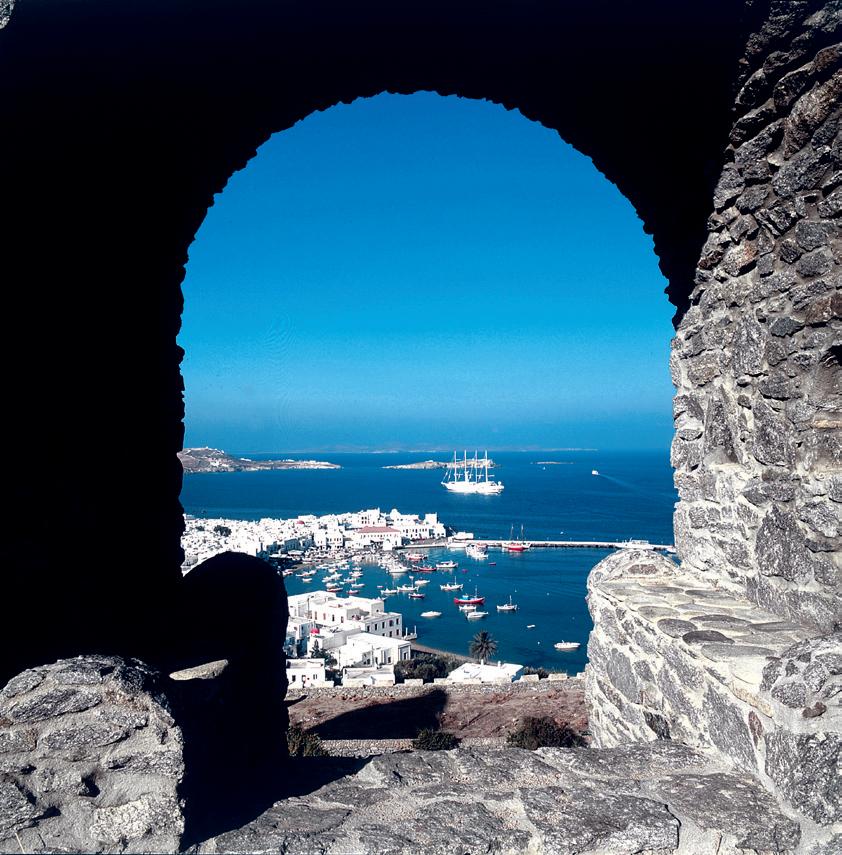
2 minute read
Mastering
from 2012-02 Sydney (1)
by Indian Link
BY THOMAS E KING
Bordered by an ultrascenic coastline of some 15,000 km and dotted with around 1400 islands of incomparable beauty and history, Greek waters are among the best in the world for sailing. This year, many of the hundred thousand Australians visiting Greece will discover these charms as part of day’s brief ‘sailaway’ or a long cruise holiday. Opportunities for excellent sailing, it seems, are as limitless as the Hellenic horizon.
The ultimate luxury in cruise magnificence in Greece is offered by cruise ships. Capable of accommodating hundreds of passengers and often fully booked during the peak summer season, lush cruising is considered by many to provide the perfect combination of comfort and relaxation along with interest and variety.
More than 30 different cruise ship lines now operate to strict schedules in the spectacularly beautiful Aegean and Ionian Seas. Three-day to two-week itineraries are designed to offer sightseeing opportunities on major and even some lesser known islands during the day, and sailing between islands during the night. In between these hours are a variety of shipboard activities ranging from swimming in heated pools or working out in gyms, to shopping in boutiques or – for the less adventurous – watching the latest videos on the latest hitech equipment. Multi-course long, lavish and ‘licious’ meals are effortlessly organised in massive dining rooms with hundreds of other famished passengers.
The 15,015 ton, 875 passenger MTS Atlas, was, not too many years ago, a star performer of the then well known Epirotiki Line. Though the ship no longer exists, it was our home away from home for a seven day cruise of the Greek islands a number of years ago. (Your travel agent can suggest a broad range of sophisticated cruise vessels that currently operate in Greek waters.)


Standing on the shiny deck of the MTS Atlas we departed Athens (actually the nearby bustling port of Piraeus) on a Friday evening. By 7am the next morning we had arrived in Santorini. A far too short four hours was spent on this fantasylike crescent-shaped isle noted for its volcanic origins and prehistoric civilisation. The dynamic beauty of Santorini coupled with stories that this island gem may well have been the legendary Atlantis lure many visitors to trod its cobblestone streets, passing white-washed churches and quaint courtyards. Later they might well pause in tiny tavernas for a strong coffee and even more powerful vistas of a real postcard-perfect scene. The excitement was duplicated each successive day as we meandered through idyllic isles.
Major cruise vessels the size of Atlas and even bigger cruise liners of today cannot anchor dockside in some of the smaller ports like Santorini and Mykonos. Consequently, all too precious sightseeing time is taken with shuttling from ship to shore and returning in much smaller ‘tenders’. This is not the case with much smaller cruise vessels called caiques (pronounced cah-yeekays). Often converted traditional fishing boats upgraded with full private facilities and catering to a boutique 20–30 passengers, caiques are moored dockside overnight at all but the very smallest of Greek ports. Such flexibility allows passengers to comfortably stroll city streets after cruise liner throngs have departed, dine in inexpensive harbour sidesited restaurants and enjoy local entertainment.
Broadly speaking, facilities of a luxury cruise liner are traded for the flexibility and personalised nature of a caique. Gone are the swish bars, multitude of decks and spacious rooms found on










